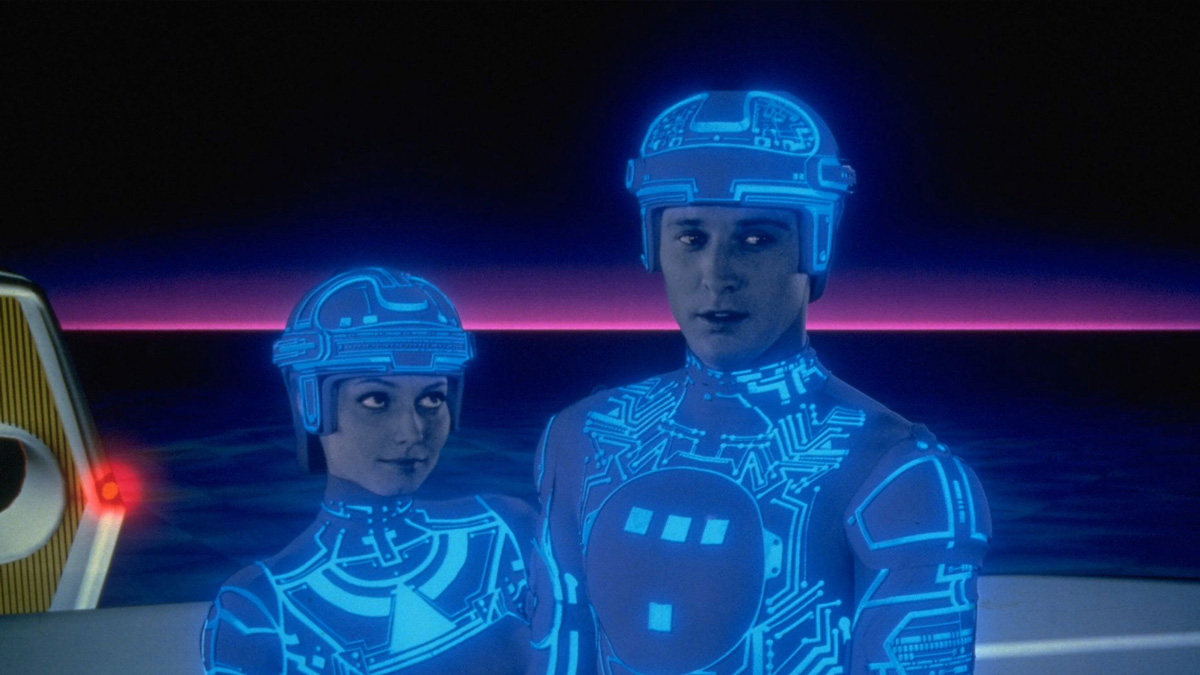
(c) Photofest / Getty Images
“Tron” The first full-scale CG movie in history, the long road to birth (Part 1)
2020.05.15
Movie "Future World"
Undeterred by PDG's failure, Whitney Jr. and Dimos approach Triple Eye's board of directors. In 1976, an entertainment technology group was formed within the company for the purpose of producing CG images, and full-scale 3DCG system development began.
At the same time, Whitney Jr. begins his business and learns that Crichton is planning a sequel to Westworld , Future World (1976). In the end, the director was Richard T. Heffron, and although Crichton was not directly involved in the film, his recommendation led to Triple Eye's participation.
“Future World” preview
This time, Peter Fonda plays a reporter who approaches the secrets of Delos and uncovers a plan to replace visiting dignitaries with robots and conquer the world. Triple Eye was in charge of the scene where a robot is created by copying Fonda, and 3DCG of his head was required.
Therefore, with the help of Franklin Crowe, The Graduate of the University of Utah Graduate School, they developed 3DCG software that boasted the highest realism in the world at the time, rendering at a resolution of 3012 x 2300 pixels. This image of Fonda's head was the first photorealistic CG image of a person seen by the general public (*6).
*6 The author, a high school student, saw this work in a movie theater, and it had such a strong impact on him that he decided to pursue a career in CG.
The phantom “Close Encounters of the Third Kind” project
The next project Triple Eye staff worked on was Steven Spielberg's Close Encounters of the Third Kind (1977). At the climax of the film, a gigantic UFO mothership appears, but a scene was planned in which a large number of glowing cubes called ``cuboids'' come flying in and deliver Arrival to humans. Special effects director Douglas Trumbull suggests, ``It would be best to express this with CG.''
Two companies, Triple Eye and MAGI (Mathematical Applications Group Inc., pronounced ma-jay) , participated in the competition for this scene. Triple Eye mathematician Malcolm McMillan has developed a program for what we would now call motion tracking or match move, which involves calculating camera movements backwards from pre-shot film and synchronizing CG movements. However, the scene itself was removed from the film before the competition was decided.
"Close Encounters of the Third Kind" preview
The cancellation of "Close Encounters of the Third Kind" was a blow, but the staff continued to accelerate software development during that time, and they quickly reached the top of the world. The calculation speed of the DEC minicomputer he had been using could not keep up.
So I decided to borrow a prototype supercomputer called Super Foonly F-1 that was lying dormant at the Stanford Institute for Artificial Intelligence. This was a machine developed with support from DARPA (U.S. Defense Advanced Research Projects Agency) , but no one had used it since research funding was discontinued. The system was so vulnerable that it would go down at least once a day, and it had only 2MB of memory, and a hard disk the size of a washing machine that was only 330MB.

